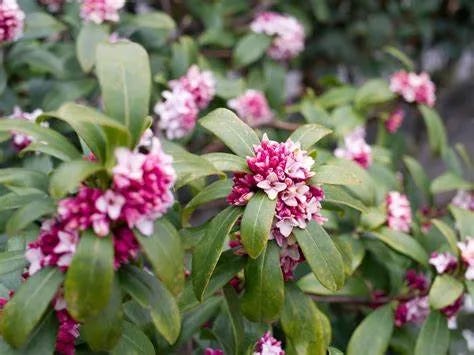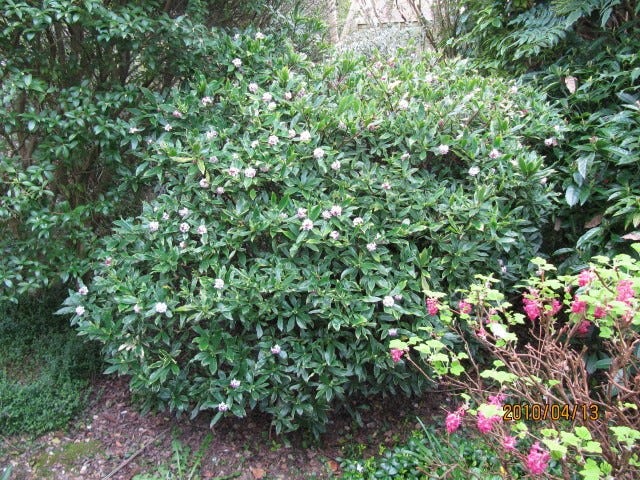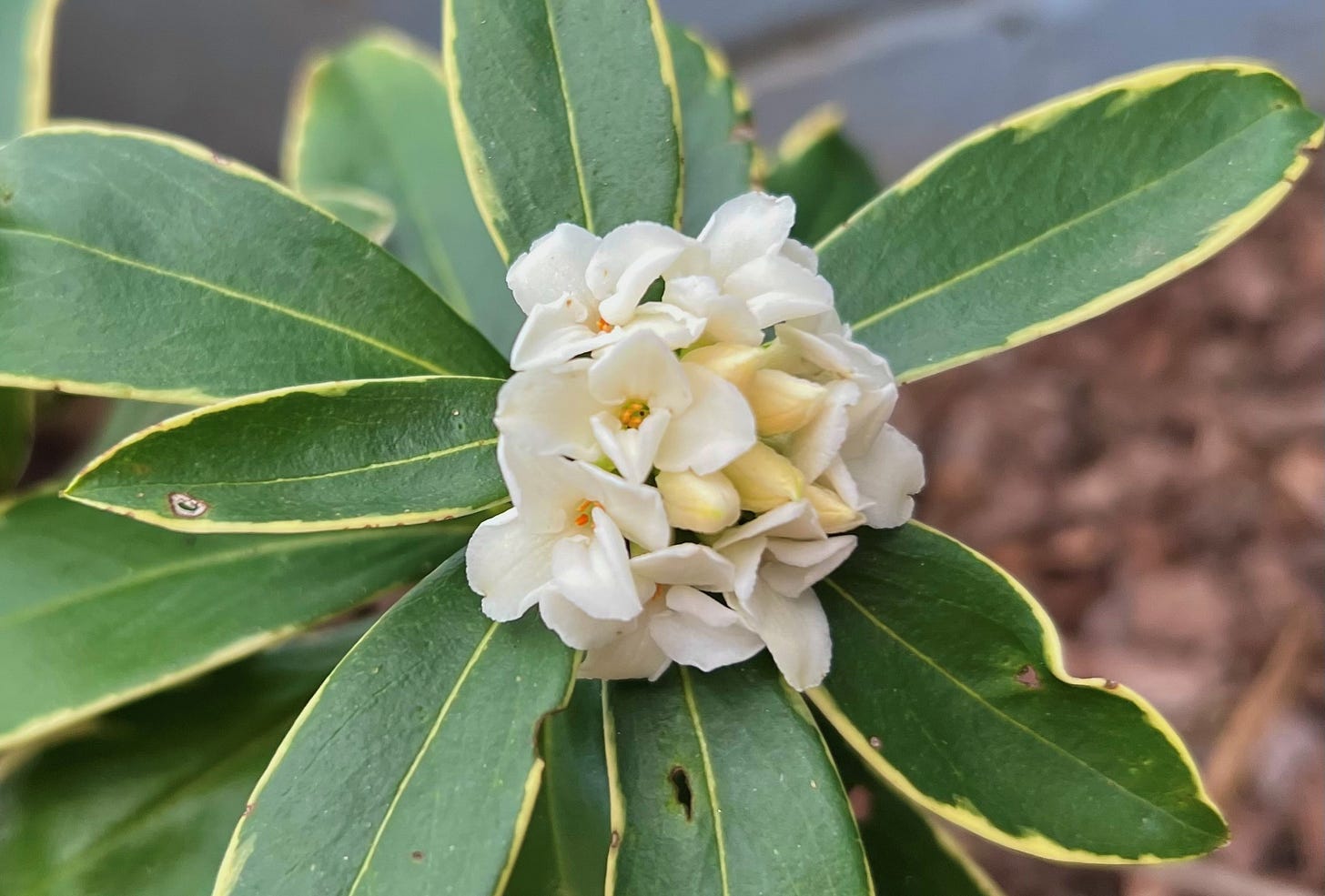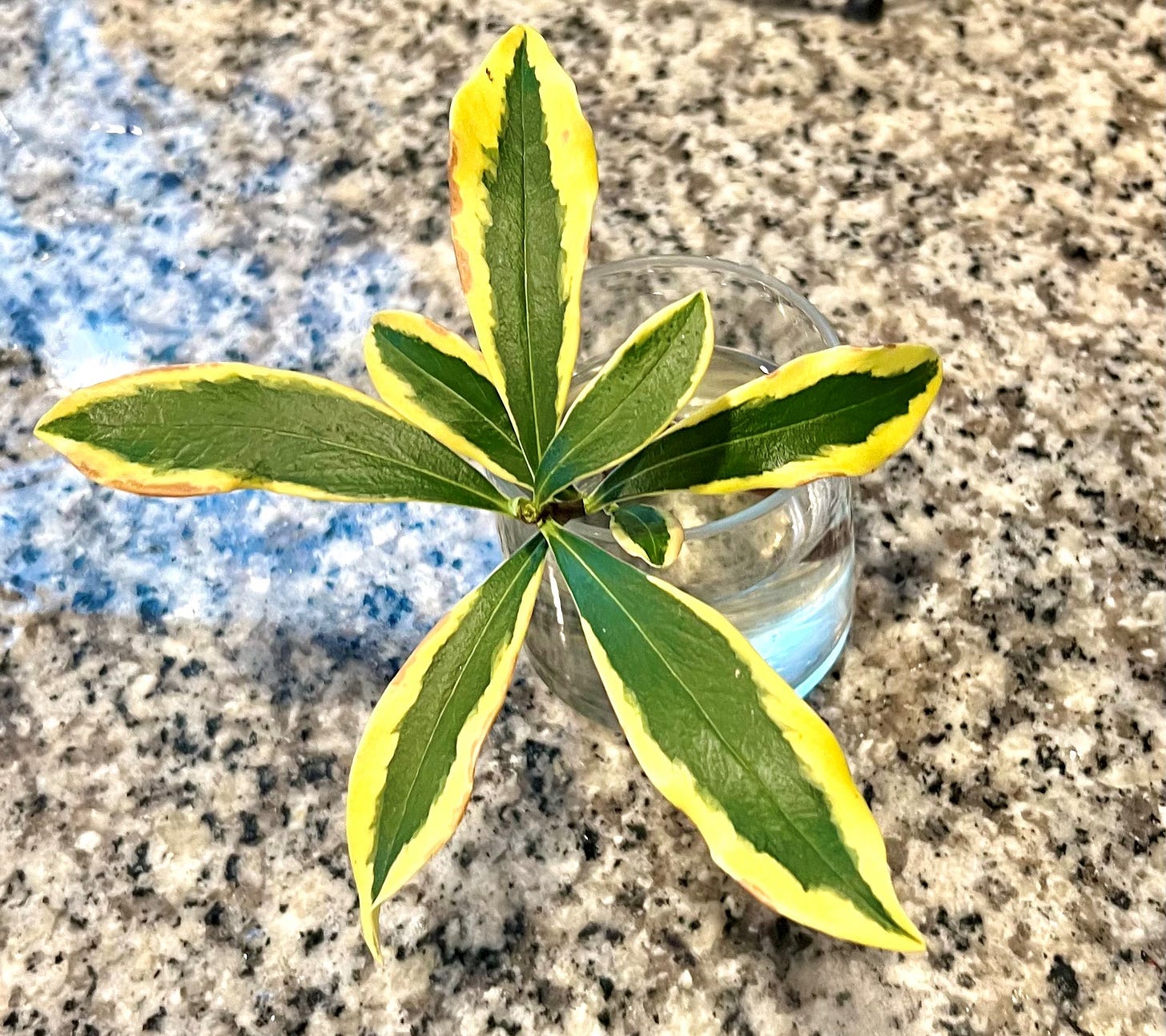Winter Daphne
Known for its evergreen leaves, clustered flowers, and its intoxicating fragrance, Winter Daphne is popping into bloom across gardens in mid-February.
Winter Daphne, or daphne odora, are divine plants known for their diva-dom. Bursting into bloom at a time when little else does, they fill the winter garden with intoxicating fragrance and put everything else to shame. But you’ll pay a high price for their beauty: their typical life span in a garden is only three to four years.
Luckily, they are easy to propagate. This makes them pretty common in the nursey trade, though mature plants are difficult to find and usually expensive. Personally, I invested in two winter daphne plants last year, at a cost of $8 each, thanks to a wonderful local nursery (which is open for 2025 as of 2/13).
Winter Daphne are notoriously fickle about their growing conditions. Many gardeners who’ve tried to grow them are painstakingly aware that they can die suddenly, even in the best of conditions. If you attend to Daphne’s preferences, however, the plant will settle in faster, live longer, and put on its best display.
These plants are the queens of well-drained soil. Root rot creeps in quickly with these plants and will be deadly. Their soil should be able to dry out between waterings without becoming crispy. Hot tip: Do not plant them in clay soil at ground level. It’s a good rule of thumb to amend your soil in everything but the best loams.
Daphne have been known to do well when planted under mature trees that can soak up excess water. Another option is to plant them in a mound of amended soil above ground level.
Mature Size: 4’ wide x 6’ tall
Hardiness Zones: 7-9
Sun: Sun-Part Shade
Soil: Well-drained, fertile.
Water: Moderate. Ensure drainage between waterings, with less water in winter.
Winter Daphne is known for its evergreen leaves and rich, winter blossoms. Some varieties also offer different leaf shapes, leaf colors, and bloom colors to add to the possibilities.


Its aesthetic qualities make Winter Daphne an obvious choice for the winter garden. Some of the companions you could look to are:
Witch Hazel. These recently profiled plants will bloom on bare branches around the same time as daphne, creating a wonderful winter show.
Plum Yews. Fine, evergreen foliage and growing requirements similar to daphne make plum yews great complements. In particular, try the low, spreading varieties.
Hostas and other shade perennials. Many shade perennials die back to the ground in the winter. Winter Daphne will hold its ground and give you something to appreciate in what would have been a blank area.
You would also do well to have Winter Daphne as a foundation plant for its evergreen leaves and mature size. Just be prepared to replace it after it gives up the ghost in a few years.
You aren’t likely to find winter daphne in big box stores. Their fickle nature means they mostly show up at specialty nurseries, and often with a decent price tag attached. For those who live in or near Georgia, I will continue to recommend Grower’s Outlet as a nursery with great selection and prices (including on Winter Daphne).
Free plants? Luckily, you can take cuttings of Winter Daphne. Buddy up to your most garden-fanatical friends who have a plant you could clip. Place it in some rooting hormone and well-drained soil for a season or so until it has enough roots to transplant.









